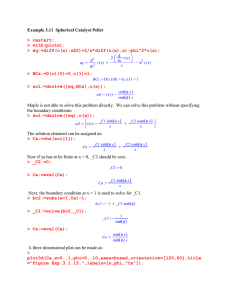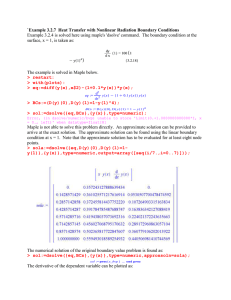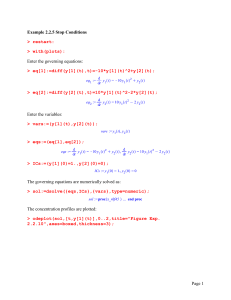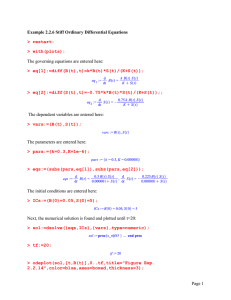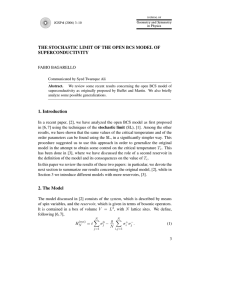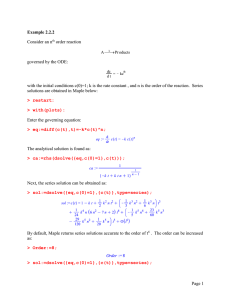Example3.2.6 Rev 1.docx
advertisement
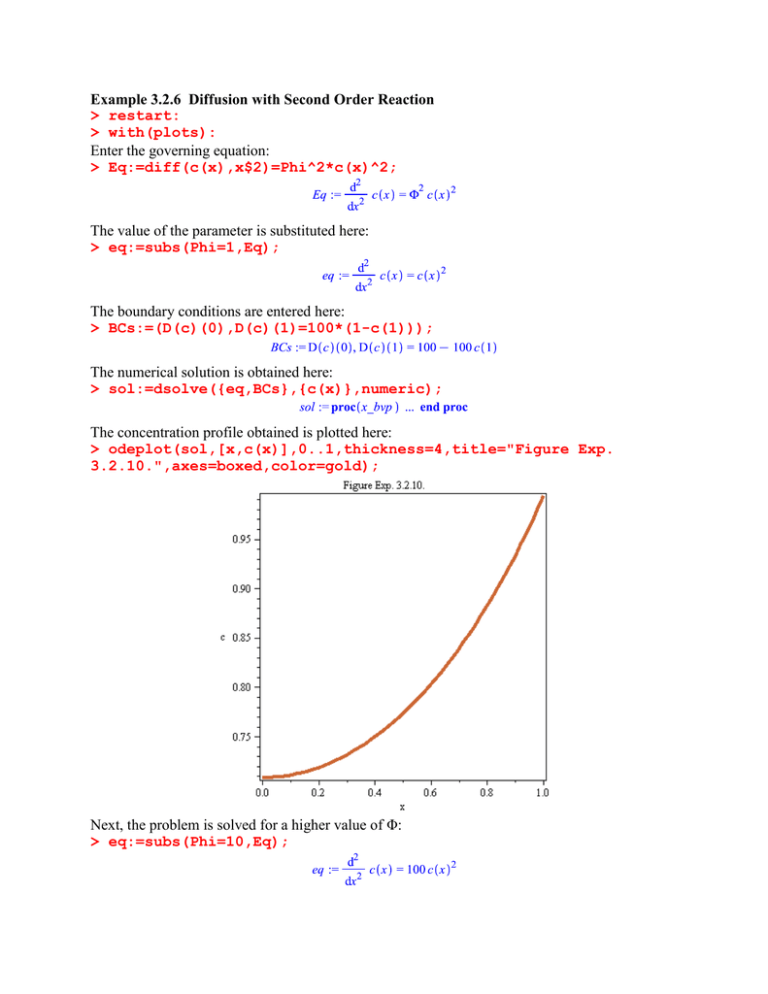
Example 3.2.6 Diffusion with Second Order Reaction
> restart:
> with(plots):
Enter the governing equation:
> Eq:=diff(c(x),x$2)=Phi^2*c(x)^2;
The value of the parameter is substituted here:
> eq:=subs(Phi=1,Eq);
The boundary conditions are entered here:
> BCs:=(D(c)(0),D(c)(1)=100*(1-c(1)));
The numerical solution is obtained here:
> sol:=dsolve({eq,BCs},{c(x)},numeric);
The concentration profile obtained is plotted here:
> odeplot(sol,[x,c(x)],0..1,thickness=4,title="Figure Exp.
3.2.10.",axes=boxed,color=gold);
Next, the problem is solved for a higher value of Φ:
> eq:=subs(Phi=10,Eq);
> BCs:=(D(c)(0),D(c)(1)=100*(1-c(1)));
> sol:=dsolve({eq,BCs},{c(x)},numeric);
> odeplot(sol,[x,c(x)],0..1,thickness=4,title="Figure Exp.
3.2.11.",axes=boxed,color=brown);
We observe that as Φ increases, the profile becomes steeper and the time taken to solve the
problem also increases.
>
